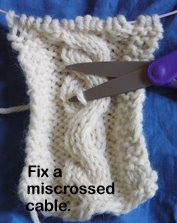.
Since I finished Genes and the Human Condition, I've been listening to the lectures for Design: Creation of Artifacts in Society.
That's another really interesting class. The assumption is that students in the class will come up with an idea for an object, or perhaps a service, that they think might sell. It works you through the whole process, from identifying a difference between a current user experience and a more desirable experience ("the gap"), to ways to define "the gap," to how to come up with ways to close "the gap," to choosing one way to close "the gap" on which to focus, to choosing a name for your product/service, prototyping, and arriving at a product/service you want to sell. (This summary has, no doubt, left out a lot of important things that he did tell us about.)
It's an interesting class for any consumer, I think. A look behind the curtain at what is going on back there, out of our sight....
A lecture I heard last night talked about human reactions to things we see. He called it "the aesthetic response" -- a gut-level response to something we either like, or don't like.
He talked about the studies that have identified our preference for gloss [ed. note -- I add sparkle and glitter]. Scientists have proposed that this is about water -- that as we evolved, on the dry African savannah, those who could quickly identify water (from a distance) had an evolutionary advantage. The proposal is that this is why so many people react so positively toward glossy [sparkly/glittery] things.
The claim is that babies love glossy, and will spend more time licking glossy stuff (which, they think, is confirmation of the association with water).
Interesting. And clearly genetic, if everything they said about it is true.....
In Design class, the emphasis was on looking at how "they" try to sell us stuff -- glossy car, anyone? -- rather than on how we got to like what we like. People with stuff to sell want us to look at their products, and react at a gut level -- "I want that!"
We were told that only much later does any sort of analysis kick in. First the gut reaction, later [ed. note -- later, if at all!], the analysis of whether the gut reaction makes any sense in our current life......................
An interesting class!
.
Subscribe to:
Post Comments (Atom)

















2 comments:
Did you hear the NPR series where they followed the creation of a t-shirt from growing the cotton to harvesting to sending it off to be made into fabric, then a shirt. Fascinating. Really made you think. This sure sounds like a good class!
I did not hear the NPR series. It sounds really interesting!
In one lecture he talked about some of the differences in manufacturing in China vs Mexico. I was hoping he would address the welfare of the factory workers, as part of decisions to make about the whole process (and the finished product!) but he didn't do that.
Post a Comment